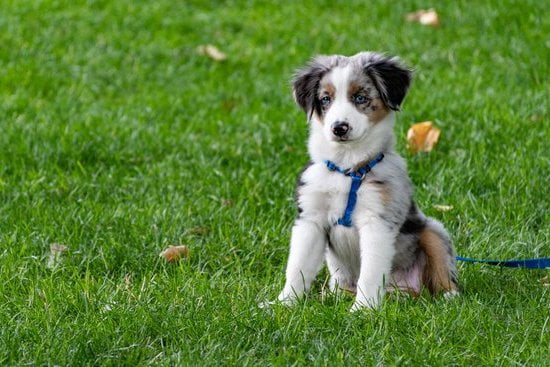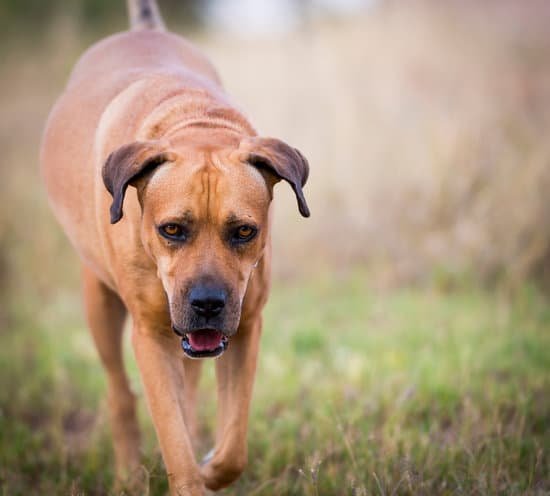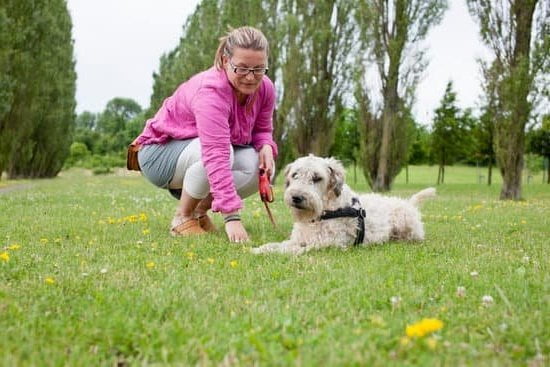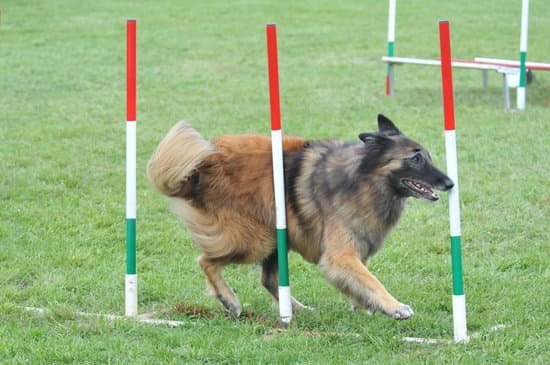House training is a crucial step in raising a well-behaved and happy dog. And one effective tool that can make the process easier is a crate.
In this article, we will explore the importance of house training with a crate and discuss the benefits it offers to both you and your furry friend. By understanding why house training is essential and how a crate can help, you’ll be well-equipped to embark on this journey with your canine companion.
Properly house training your dog not only ensures a clean and hygienic living environment but also sets the foundation for good behavior and obedience. It teaches your dog where to eliminate, establishing clear boundaries within your home. Additionally, it helps prevent destructive behavior caused by boredom or anxiety when left unsupervised. House training provides structure and routine, which dogs thrive on.
Using a crate as part of the house training process offers numerous advantages. A crate serves as a safe haven for your dog, providing them with their own personal space where they can feel secure. It mimics a den-like environment, which instinctually appeals to dogs as den animals. Furthermore, crates facilitate potty training by teaching dogs to hold their bladder or bowel movements until they are taken outside.
In this article, we will guide you through each step of house training your dog with a crate. From choosing the right crate for your dog’s comfort to introducing them to the crate in a positive manner, we will provide practical tips and techniques for success. So let’s dive into this essential aspect of pet ownership and create a harmonious living space for both you and your furry companion.
Choosing the Right Crate for Your Dog
When it comes to house training a dog with a crate, selecting the right crate is crucial for your dog’s comfort and safety. There are various types of crates available, each with its own pros and cons. By choosing the appropriate size and material, you can ensure that your dog feels secure and at ease in their crate.
One important factor to consider when choosing a crate is the size. It’s essential to select a crate that is large enough for your dog to stand up, turn around, and lie down comfortably. If the crate is too big, your dog may not feel secure or may be more likely to have accidents inside. On the other hand, if the crate is too small, it can restrict your dog’s movement and cause discomfort.
In addition to considering size, you should also think about the material of the crate. The most common types of crates include wire crates, plastic crates, and soft-sided crates. Wire crates provide good ventilation and visibility but may not be suitable for dogs who like to chew or scratch.
Plastic crates offer a more den-like environment and are often preferred by dogs who seek security or privacy. Soft-sided crates are lightweight and portable but may not be as durable as other options.
Considering these factors will help you choose the right type of crate for your dog’s needs. Remember that some dogs may require different types of crates depending on their age or temperament. For example, puppies may benefit from using a smaller crate with dividers to prevent accidents in one area while still having enough space to move around.
| Type of Crate | Pros | Cons |
|---|---|---|
| Wire Crate | Good ventilation and visibility | May not be suitable for dogs who like to chew or scratch |
| Plastic Crate | Offers a den-like environment, provides security and privacy | Can be less breathable and may limit visibility |
| Soft-sided Crate | Lightweight and portable, easy to store | May not be as durable or secure as other types |
By carefully selecting the right crate for your dog, you can create a comfortable and secure space for them during the house training process.
Introducing Your Dog to the Crate
When it comes to house training a dog with a crate, the initial introduction to the crate plays a crucial role in setting a positive foundation for your dog’s training journey. The key is to make the crate a comfortable and inviting space that your dog willingly enters on their own accord. Here are some steps to help you introduce your dog to the crate in a positive and comfortable manner.
Step 1: Familiarize Your Dog with the Crate
Begin by placing the crate in an area of your home where your dog spends most of their time. Keep the door of the crate open and secure it so that it doesn’t accidentally close while your dog is exploring. Encourage your dog to investigate the crate by using treats or toys as incentives. Allow them to approach and sniff around the crate at their own pace without any pressure or force.
Step 2: Create Positive Associations
Once your dog starts showing interest in the crate, begin creating positive associations by rewarding them for any actions that involve interacting with or entering the crate voluntarily. You can use treats, praise, or even a special toy reserved exclusively for crate training sessions. This helps your dog associate positive experiences with being near or inside the crate.
Step 3: Gradual Acclimation
After establishing positive associations, start gradually acclimating your dog to spending more time inside the crate with short intervals. Begin with just a few minutes, then gradually increase the duration over several days or weeks depending on your dog’s progress and comfort level. Always make sure there are familiar and comforting items, such as bedding or a favorite blanket, inside the crate.
Step 4: Reinforce Positive Behaviors
Throughout this process, remember to continue reinforcing positive behaviors around and inside the crate. Whenever your dog willingly enters or stays inside without signs of anxiety or fear, reward them with praise and treats. It’s crucial not to rush this process as it may take time for your dog to fully feel comfortable and secure in the crate.
Using a crate for house training can be an effective tool when introduced properly. By following these steps and being patient with your dog’s individual progress, you can create a positive association with the crate and help facilitate a successful house training journey. Remember, the goal is to make the crate a safe and comfortable space where your dog voluntarily chooses to spend time.
Establishing a Routine and Schedule
One of the key aspects of successfully house training a dog with a crate is establishing a routine and schedule. A consistent routine not only helps your dog understand what is expected of them but also makes the house training process more efficient and effective.
In this section, we will discuss the significance of establishing a routine, guide readers on setting up a feeding, drinking, and potty schedule for their dogs, and emphasize the importance of supervising and closely monitoring the dog during the training process.
The Significance of Establishing a Routine
Establishing a routine is crucial for several reasons. Firstly, it helps your dog understand when they can expect to eat, drink, exercise, and relieve themselves. Dogs are creatures of habit, and having a set schedule will make it easier for them to anticipate these activities.
Secondly, a routine creates consistency, which is essential for successful house training. When your dog knows what to expect each day, it becomes easier for them to adapt their behavior and learn where they should eliminate.
Setting Up Feeding, Drinking, and Potty Schedule
To establish a routine for your dog’s house training with a crate, it’s important to set up specific times for feeding, drinking, exercise/playtime, and potty breaks. Start by determining how many meals your dog needs in a day based on their age and breed. For example, puppies usually require more frequent meals than adult dogs. Divide their daily food portion into appropriate meal sizes.
In addition to meal times, schedule regular water breaks throughout the day. However, it’s wise to limit access to water around one hour before bedtime or longer if recommended by your veterinarian so that you can minimize accidents during sleep time.
Potty breaks are an essential part of establishing a routine. Dogs typically need to eliminate shortly after waking up in the morning or from naps as well as after meals and play sessions. Take your dog outside to their designated potty area on a leash and provide them with ample time to relieve themselves. Be patient and use positive reinforcement when they do so in the correct spot.
Supervising and Monitoring Your Dog
During the house training process, it’s crucial to closely supervise and monitor your dog, especially when they are not in their crate. Supervision ensures that you can catch any signs that your dog needs to eliminate and take them outside promptly. It also prevents accidents from occurring indoors, allowing you to redirect them to the appropriate spot.
When your dog is out of the crate, keep a close eye on their behavior. Signs that they may need to eliminate include sniffing around, circling, or becoming restless. If you notice any of these behaviors, bring them outside immediately.
Remember that accidents can still happen even with a strict routine in place. Never punish or scold your dog for accidents as this will only create fear and anxiety around eliminating in front of you. Instead, clean up accidents thoroughly with an enzyme-based cleaner and continue reinforcing positive behaviors.
By establishing a routine and schedule for your dog’s house training with a crate, you are setting both of you up for success. Consistency is key in teaching your dog where and when it is appropriate to eliminate while also building trust between you and your furry companion.
Using Crate Training for Potty Training
Potty training is one of the most important aspects of house training a dog, and crate training can be an effective tool in achieving this goal. When used correctly, a crate can help establish bladder control and discourage indoor accidents. In this section, we will explore how to utilize crate training for potty training your dog effectively.
Establishing Bladder Control
One of the key benefits of using a crate for potty training is that it helps with establishing bladder control in your dog. Dogs naturally avoid soiling their living space, and the confined space provided by the crate encourages them to hold their bladder until they are let outside. The crate acts as a temporary living area where your dog can spend short periods without eliminating.
To establish bladder control, it is crucial to provide frequent bathroom breaks for your dog. Take them outside to their designated potty area immediately after letting them out of the crate. Use specific cues or commands that you want your dog to associate with going potty, such as “go potty” or “do your business.” Be patient during this process as it may take some time for your dog to understand and respond to these cues consistently.
Discouraging Accidents Indoors
In addition to helping establish bladder control, crate training can also discourage indoor accidents. When unsupervised, dogs may wander around the house and go potty wherever they please. By confining your dog in the crate when you cannot supervise them closely, you prevent them from having opportunities to eliminate indoors.
It is essential to remember that puppies have limited bladder control and may need more frequent bathroom breaks compared to adult dogs. As a general rule of thumb, puppies should be taken outside every hour during the day and once during the night. Adult dogs can typically hold their bladder longer but still require regular bathroom breaks throughout the day.
Remember, crate training should always be accompanied by positive reinforcement. Praise and reward your dog with treats or verbal praise when they eliminate outside. This will help reinforce the desired behavior and motivate your dog to continue potty training successfully.
By utilizing crate training for potty training, you can establish bladder control and discourage accidents indoors effectively. Consistency and positive reinforcement are key throughout this process. In the next section, we will discuss essential dos and don’ts of crate training to ensure the overall success of the house training journey with your furry companion.
Crate Training Dos and Don’ts
Crate training can be an effective method for house training your dog, but it’s important to know the dos and don’ts to ensure a successful and positive experience for both you and your furry friend. Here are some essential guidelines to follow when crate training your dog:
Dos:
- Do make the crate a comfortable and inviting space: Make sure the crate is equipped with a cozy bed or blanket and toys to keep your dog comfortable and entertained. This will help create a positive association with the crate.
- Do start slow and gradually increase time spent in the crate: Introduce the crate gradually, starting with short periods of time and gradually increasing as your dog becomes more comfortable. This gradual acclimation will help reduce anxiety or fear associated with being confined.
- Do use positive reinforcement techniques: Reward your dog with treats, praise, or affection whenever they enter the crate voluntarily or exhibit calm behavior inside. Positive reinforcement will strengthen their connection between the crate and positive experiences.
Don’ts:
- Don’t use the crate as a form of punishment: The crate should never be used as a means of punishment for your dog. It should be seen as a safe space where they can relax, sleep, or retreat when needed.
- Don’t leave your dog in the crate for too long: While crates can be useful for short periods of confinement, leaving your dog in the crate for extended periods is not recommended. Dogs need regular exercise, mental stimulation, and social interaction outside of the crate.
- Don’t rush the process: Every dog is different, so it’s important to be patient during the crate training process. Avoid rushing or forcing your dog into the crate as this could lead to negative associations and resistance towards using it.
By following these dos and don’ts, you can create a positive environment for crate training that helps foster good behavior and promotes successful house training with your furry companion. Remember, consistency and patience are key to achieving the desired results.
Gradually Graduating from Crate to Freedom
Once your dog has become consistently house trained using the crate, it’s time to start gradually increasing their freedom and independence. This process should be done slowly and thoughtfully to ensure that your dog continues to practice good behaviors and avoids backsliding into old habits. Here are some tips on how to transition from crate training to allowing your dog more freedom around the house:
- Supervised Access: Start by giving your dog supervised access to one small area of the house outside of the crate. This can be a single room or a gated-off section of a larger room. Make sure this area is puppy-proofed and free from any hazards or temptations for your dog.
- Extend Time Periods: Begin by allowing short periods of supervised freedom in the designated area, gradually increasing the duration over time as your dog demonstrates good behavior and reliability. Remember to continue adhering to a consistent feeding, drinking, and potty schedule during this stage.
- Use Positive Reinforcement: Throughout this transition phase, continue using positive reinforcement to reward your dog for appropriate behavior. Praise and give treats when they use their designated bathroom spot outdoors and when they demonstrate good manners indoors.
- Gradually Expand Boundaries: As your dog proves themselves trustworthy in the restricted area, slowly expand their boundaries within your home. Allow access to additional rooms one at a time while keeping a close eye on them for any signs of trouble or accidents.
- Eliminate the Need for Crate: The ultimate goal is for your dog to no longer need the crate for house training purposes. Once they consistently demonstrate good behavior with access to most areas of the home, you can start leaving the crate door open during supervised periods so that your dog can choose whether or not they want to relax inside it.
Remember, consistency is key during this process. If accidents occur or you notice any regressions in behavior, it’s important to assess and modify your approach accordingly. Graduating from the crate to freedom is a gradual process that requires patience and attentiveness to your dog’s needs.
By following these steps and maintaining consistent expectations, you can successfully transition your dog from relying on the crate for house training to having more freedom around the house. With time, patience, and positive reinforcement, your well-trained dog will be able to enjoy their new-found independence while still behaving appropriately within your home.
Troubleshooting Common Challenges
Crate training can be a highly effective method for house training your dog, but it’s not without its challenges. As you navigate the process, you may encounter some common issues that can hinder progress. In this section, we will address these challenges and provide guidance on how to overcome them.
One common challenge that many pet owners face during crate training is excessive whining or barking from their dog. It’s important to remember that this behavior is a form of communication from your furry friend. However, it’s crucial not to give in to their demands and let them out of the crate when they exhibit this behavior, as it reinforces the idea that whining or barking will get them what they want.
To address excessive whining or barking, there are a few strategies you can try. First, ensure that your dog has had ample exercise and mental stimulation before crate time to help tire them out and reduce anxiety. Additionally, consider covering the crate with a blanket or using calming aids such as pheromone sprays or noise machines to create a more soothing environment.
Another challenge commonly encountered during crate training is resistance or refusal by the dog to enter the crate. This can stem from fear or anxiety associated with confinement. To help overcome this challenge, introduce positive reinforcement techniques when it comes to the crate. Use treats, praise, and toys to create positive associations with entering and staying inside the crate.
You may also need to take a gradual approach when acclimating your dog to spending time in their crate. Start by leaving the door open and placed in an accessible area where your dog can explore at their own pace. Gradually increase the amount of time they spend inside until they are comfortable being confined for longer periods.
By addressing these common challenges with patience and consistency, you’ll be better equipped to work through any setbacks or regression in the house training process. Remember that every dog is unique, and it may take some trial and error to find the strategies that work best for your furry friend. Stay persistent, offer plenty of positive reinforcement, and celebrate every step forward in your dog’s house training journey.
Conclusion
In conclusion, house training a dog with a crate is an essential aspect of ensuring a well-behaved and happy canine companion. Throughout this blog post, we have discussed the importance of house training, the benefits of using a crate as a training tool, and provided guidance on choosing the right crate for your dog.
Additionally, we have explored various strategies for introducing your dog to the crate in a positive and comfortable manner and establishing a routine and schedule for successful house training.
Using the crate as a tool for potty training has also been thoroughly explained, along with dos and don’ts of crate training to ensure a smooth process. Furthermore, we discussed how to gradually increase your dog’s freedom and independence once they are consistently house trained and provided solutions for troubleshooting common challenges that may arise during crate training.
As you embark on this journey to house train your dog with a crate, remember to celebrate their progress and success. Every small achievement is worth acknowledging, as it signifies a step closer to having a well-trained and well-adjusted furry companion. Remember to always maintain consistency and reinforce positive behaviors throughout the process.
Whether you are starting from scratch or facing setbacks along the way, know that you are not alone. With patience, perseverance, and plenty of love, your dog will grow into a well-mannered member of your family. So be proud of yourself and your furry friend’s achievements thus far, and continue to provide them with the support they need to succeed in their house training journey.
Frequently Asked Questions
Can you housebreak a dog with a crate?
Yes, using a crate can be an effective method for housebreaking a dog. Crate training creates a designated space for the dog to rest and sleep, which helps develop their natural instinct to keep their living area clean.
By using positive reinforcement techniques, such as providing treats and praise when the dog eliminates outside of the crate, they will associate going outside with a reward and learn to hold their bladder or bowel movements until they are given the opportunity to go outside.
How long does it take to housebreak a puppy using a crate?
The time it takes to housebreak a puppy using a crate can vary depending on various factors such as the individual puppy’s age, breed, temperament, and consistency in training. Typically, it takes anywhere from several weeks up to several months to fully housebreak a puppy using the crate training method.
Consistency is key during this process – taking them outside regularly, especially after meals or naps, supervising them closely while inside the house, and providing ample opportunities for them to eliminate outside will help speed up the process.
How do I go from crate training to house training?
Transitioning from crate training to house training involves gradually expanding your puppy’s access around the house while setting clear boundaries and expectations. Start by allowing your puppy supervised access to one room at a time that has easily cleanable floors (such as kitchens or bathrooms) before gradually giving them more freedom in other areas of the house. Keep a close eye on your puppy’s behavior during this transition phase and be ready to intervene if you notice any signs that they may need to eliminate.
Continue reinforcing desired behavior by praising and rewarding them when they go in appropriate locations outdoors while addressing any accidents promptly with proper cleaning techniques so they understand where it is acceptable and not acceptable to go potty within the home. It’s important to remain consistent with routines and continue reinforcing good habits until your puppy is reliably house trained throughout your entire home.

Welcome to the blog! I am a professional dog trainer and have been working with dogs for many years. In this blog, I will be discussing various topics related to dog training, including tips, tricks, and advice. I hope you find this information helpful and informative. Thanks for reading!





